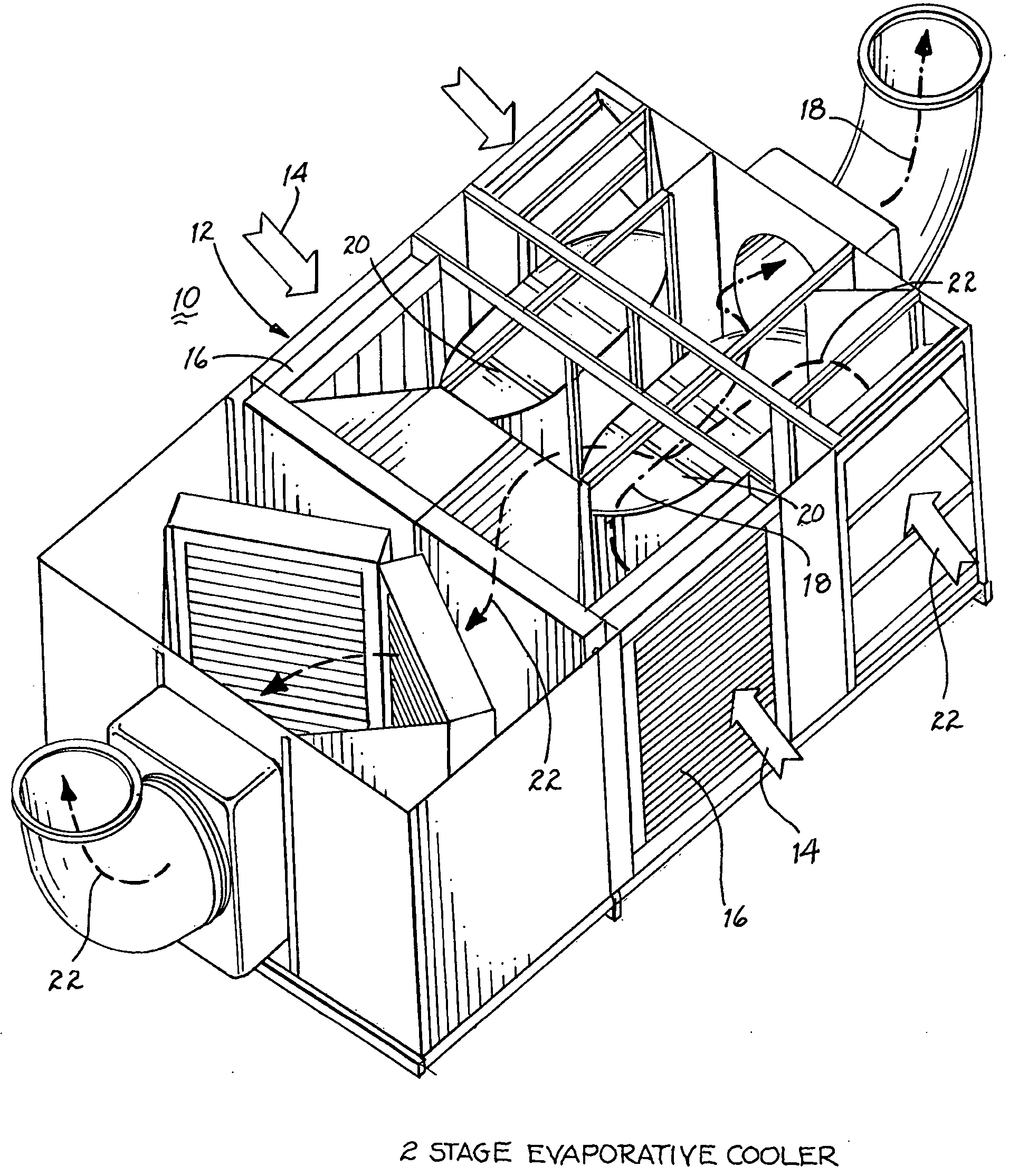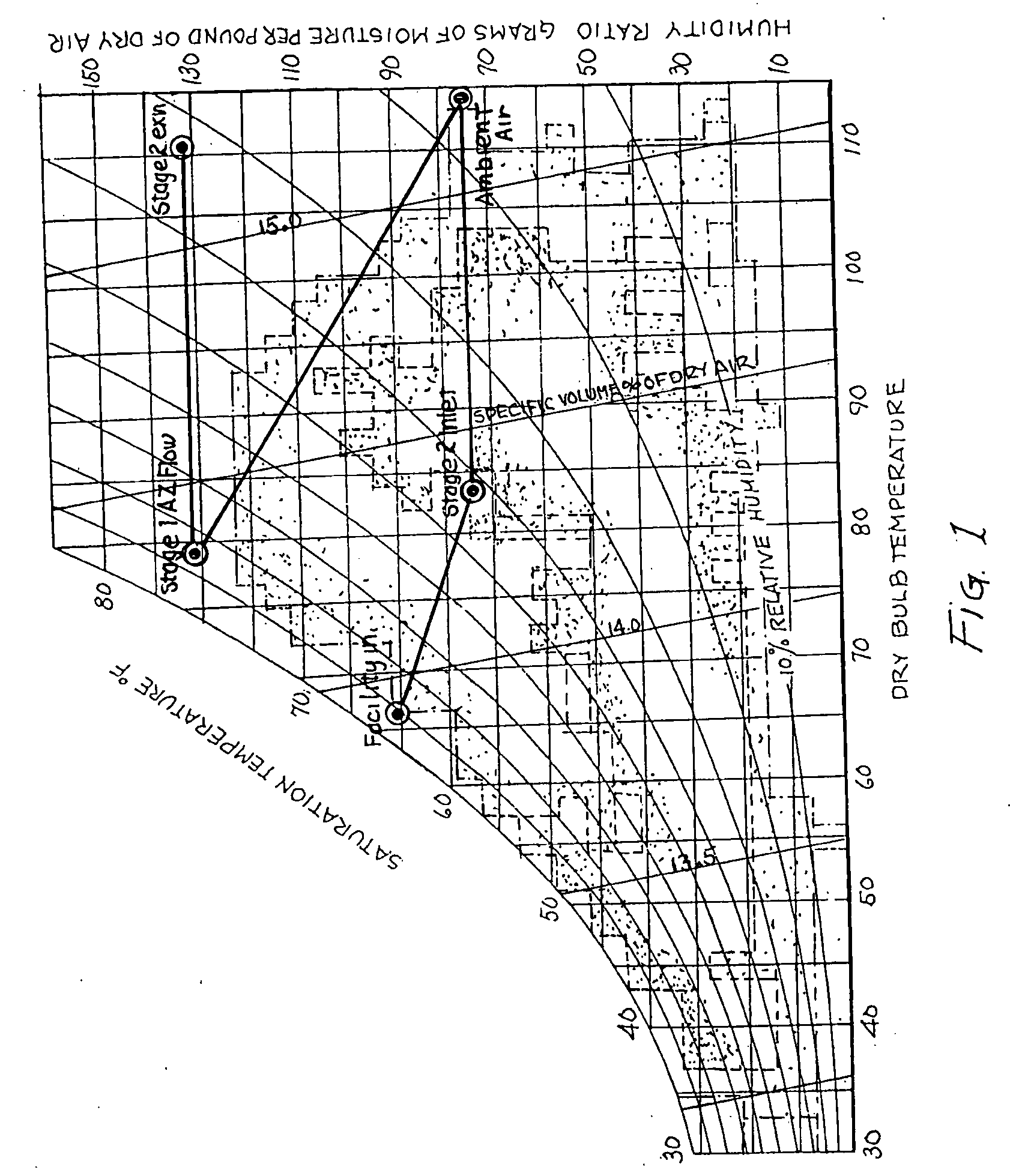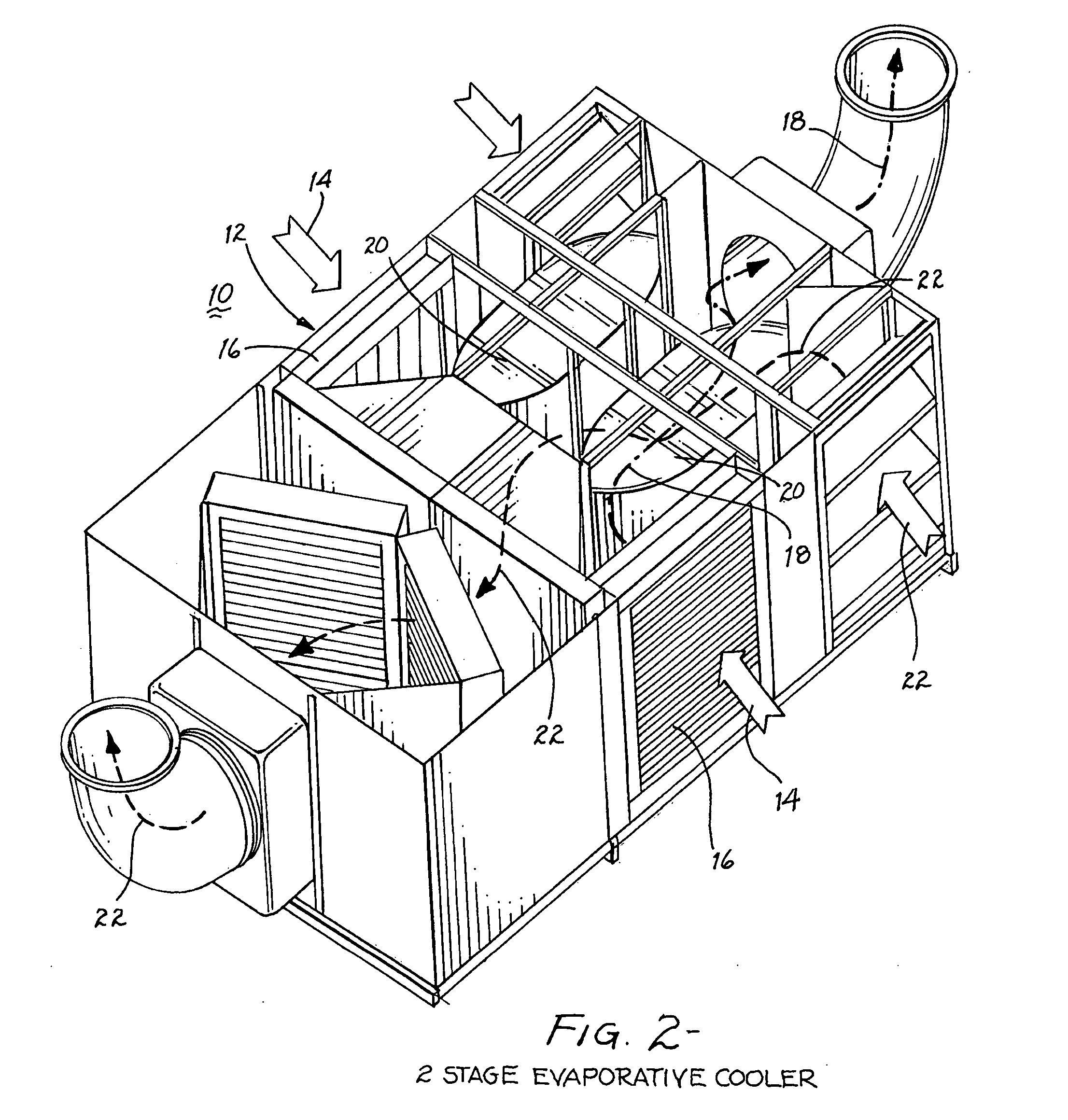Air to air heat exchanger
a heat exchanger and air technology, applied in the direction of lighting and heating apparatus, heating types, laminated elements, etc., can solve the problems of limiting the power required to circulate the gas through the heat exchanger, and the kinetic energy change of the air is also limited to directional changes, so as to increase heat transfer and energy efficiency, and reduce cost
- Summary
- Abstract
- Description
- Claims
- Application Information
AI Technical Summary
Benefits of technology
Problems solved by technology
Method used
Image
Examples
Embodiment Construction
[0079]The preferred embodiment of the gas-to-gas (air-to-air) heat exchanger described herein is well suited for numerous applications over a broad range of thermal conditions by selective choice of the materials used for the parts and functions. Examples of such material selection are use of cast metal or graphite for the mechanical clips instead of injection molded plastic and graphite strips instead of plastic foam for the channel flow barriers and pressure boundaries. Additionally, many of the unique elements of the heat exchanger can be adapted or incorporated directly into other configurations to expand the set of applications. Given the need to narrow this broad range of applications in order to describe a preferred embodiment that demonstrates the benefits and allows effective characterization of the innovative features of this gas-to-gas heat exchanger, a two stage evaporative cooler application has been selected for the preferred embodiment. In this application, the gas to...
PUM
 Login to View More
Login to View More Abstract
Description
Claims
Application Information
 Login to View More
Login to View More - R&D
- Intellectual Property
- Life Sciences
- Materials
- Tech Scout
- Unparalleled Data Quality
- Higher Quality Content
- 60% Fewer Hallucinations
Browse by: Latest US Patents, China's latest patents, Technical Efficacy Thesaurus, Application Domain, Technology Topic, Popular Technical Reports.
© 2025 PatSnap. All rights reserved.Legal|Privacy policy|Modern Slavery Act Transparency Statement|Sitemap|About US| Contact US: help@patsnap.com



